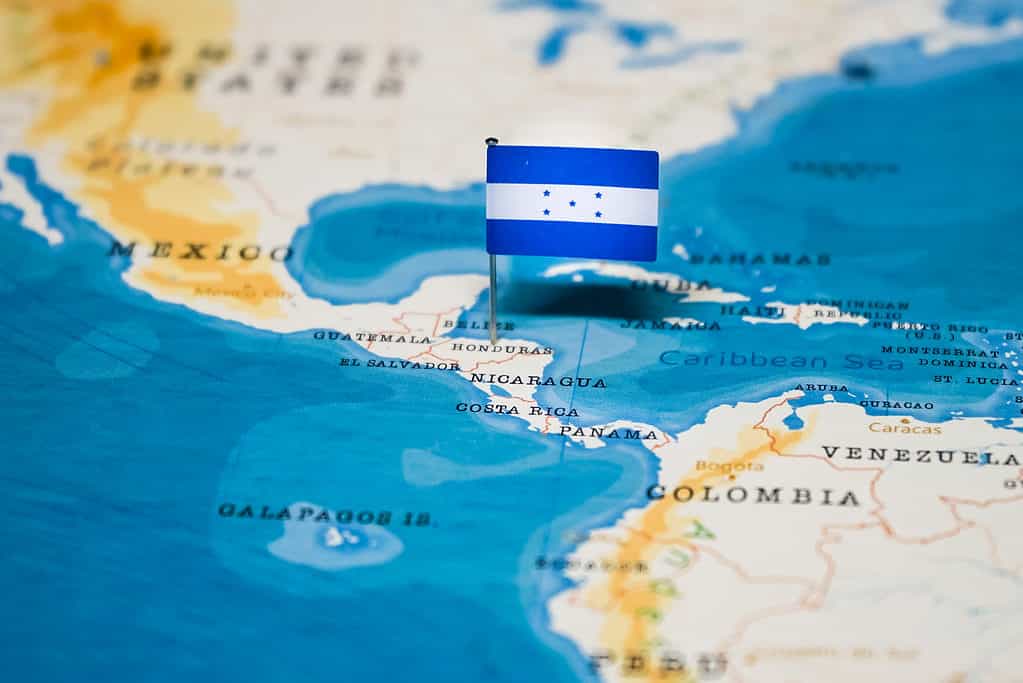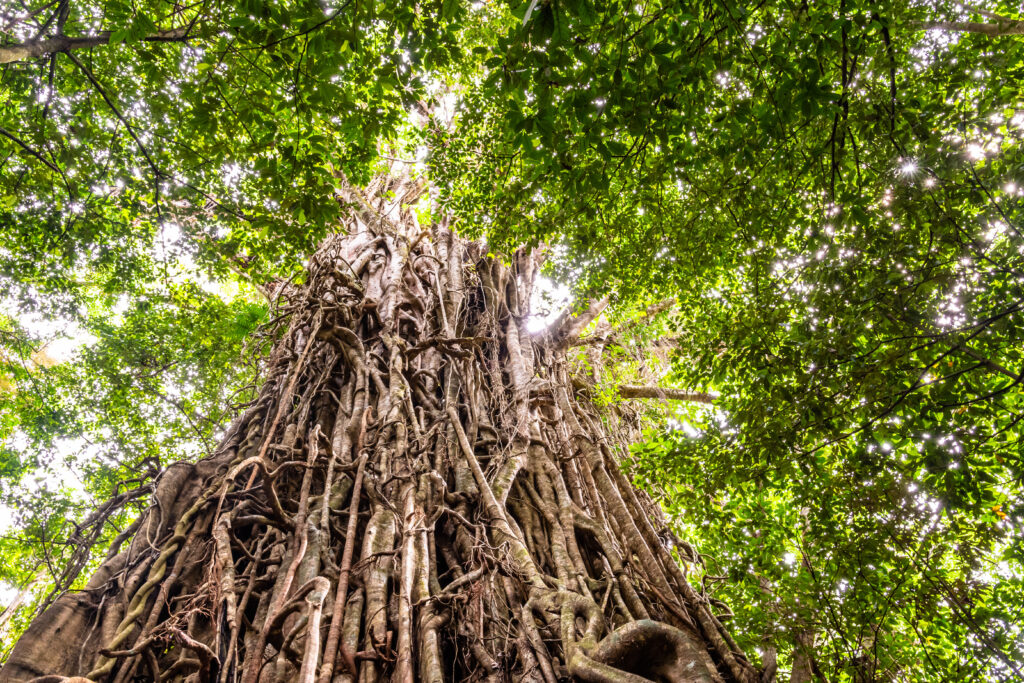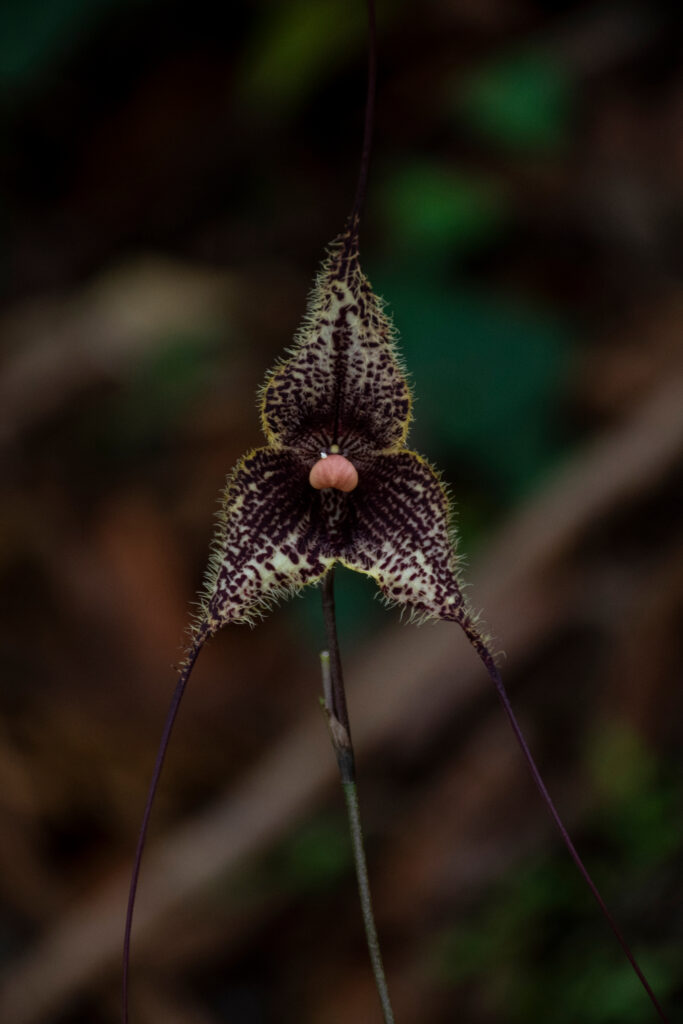Hot and tropical Honduras is packed full of stunning flora, but only one is their national flower. It’s the beautiful Rhyncholaelia digbyana, better known as the “Virgin’s Orchid.” Read on to discover more about the national flower of Honduras, Rhyncholaelia digbyana, and why it was chosen to represent this friendly nation.
Rhyncholaelia Digbyana Is Honduras’ National Flower
Rhyncholaelia digbyana is Honduras’ national flower. It was declared Flor Nacional de Honduras on November 26, 1969. It is a green–white epiphyte orchid that grows on tree branches in wet, tropical cloud forests. The “Virgin’s Orchid” (named after Mary, mother of Christ in the Christian religion) is also called “Digby’s Beaked Laelia” or “Brassavola digbyana.” This stunning orchid is a member of the Orchidaceae family and is native to Belize, Guatemala, Honduras, and Southeast Mexico.
Rhyncholaelia Digbyana is different from other orchids in the Rhyncholaelia family because it has a distinctive frilled lip that gives it a fluffy appearance. The Rhyncholaelia orchids were discovered by Honduran botanist Antonio Molina Rosito (1926-2012), who discovered over 100 Honduran plants while exploring his native ecosystems.
What Does Rhyncholaelia Digbyana Look Like?
The “Virgin’s Orchid” is an epiphytic plant that grows on trees in its native cloud forests. It’s particularly abundant in pine and oak forests at 2,600 feet above sea level, where it blooms for most of the summer season. However, due to habitat destruction, its range is much reduced. The entire plant is medium-sized in contrast to its large flowers, but it still contains flower-topped erect stems, lots of eight-inch leathery leaves, and nutrient-storing pseudo bulbs.
Rhyncholaelia digbyana is a large flowering orchid with a distinctive three-lobed fringed lip. Each flower is white to apple-green, reaches seven inches in diameter, and has a refreshing lemon scent. Flowers release their lemony scent at night because their main pollinators are moths. During the day, other pollinators such as bees, butterflies, beetles, and birds visit to drink its nectar and hide in the large petals.

is a large flowering orchid with a distinctive three-lobed fringed lip.
©Chuck Wagner/Shutterstock.com
Why Is The National Flower of Honduras Rhyncholaelia Digbyana?
There is some history to this question!
From 1946 until 1969, the national flower of Honduras was a rose. Roses were taken to Honduras by Spanish colonialists, so they aren’t native flowers but were chosen by the governors (or, as some newspaper reports suggest, their wives) for their beauty.
In 1969, Antonio Molina (who discovered the Rhyncholaelia orchids) suggested a change to the Honduran native orchid, Rhyncholaelia digbyana. The Honduran government approved the change, so from 1969, the Virgin’s Orchid has represented Honduras and features on their coat of arms. It’s an important symbol of Honduras’s biodiversity and its independence from colonial rule.
Rhyncholaelia digbyana is a Honduran native orchid, one of 630 described so far, and it’s also highly prized for its beauty. They grow wild but are also cultivated in gardens and in wedding bouquets. But that’s not all. The Virgin’s Orchid isn’t just an attractive flower, it also has medicinal properties. In traditional Honduran medicine, Rhyncholaelia digbyana and other orchids treat respiratory and digestive problems. Modern studies indicate orchids have some anti-cancer potential.
Is Honduras in South America?
No, Honduras is in Central America. Its official name is the Republic of Honduras, and it has boundaries with El Salvador, Nicaragua, and Guatemala. It borders water with the Pacific Ocean, the Gulf of Fonseca, and the Gulf of Honduras. More than 10 million people live in its 112,492 square kilometers (43,433 square miles). Honduras is almost the same size as the state of Louisiana, which is home to 4624 million people, under half of Honduras’s population!
Central American geography is always stunning, and Honduras is no exception. It’s mountainous with narrow coastal plains, but also contains rain forests, cloud forests, mangroves, the Mesoamerican barrier reef, pine and oak forests, plus a huge undeveloped lowland jungle, “La Mosquitia,” that’s home to jaguars, anacondas, ocelots, howler monkeys, giant anteaters, giant iguanas, and Rhyncholaelia digbyana orchids!
La Mosquitia houses the UNESCO world heritage site Rio Platano Biosphere Reserve, an incredible biodiversity hotspot and home to indigenous Honduran people, but deforestation is a real problem in Honduras. Land clearance for farming and logging for rich hardwood has left large areas prone to soil erosion and land degradation.

Honduras is located in Central America.
©Hyotographics/Shutterstock.com
What Plants Are Native to Honduras?
Our mission to discover the national flower of Honduras, Rhyncholaelia digbyana, has uncovered some incredible facts. Other incredible plants native to Honduras include the following.
Strangler Fig
The Ficus aurea is a parasitic tree that starts life as an epiphyte but doesn’t stop there. It grows branches and roots that envelop its host plant and sends down long soil-tapping roots. Over time, the enveloped tree dies, and the strangler fig remains — creepy stuff.

The Ficus aurea is a parasitic tree that starts life as an epiphyte but doesn’t stop there.
©Maurizio Callari/Shutterstock.com
Fernaldia Pandurata
Known as loroco, this is a long vining plant with sweetly scented green-white flowers. Its flower buds are an important part of the Honduran diet. They are harvested and cooked with eggs, cheese, and chicken.

Fernaldia Pandurata’s flower buds are an important part of the Honduran diet.
©Wirestock Creators/Shutterstock.com
Yellow Lotus
Found in mangrove swamps, this beautiful lotus flower has yellow cup-shaped flowers. It’s one of the few flowering mangrove plants in Central America.

Found in mangrove swamps, this beautiful lotus flower has yellow cup-shaped flowers.
©Hernando Sorzano/Shutterstock.com
Dracula Orchids
Named for their blood-red flowers and odd spiky bracts, these epiphyte orchids actually use their colors to attract pollinating fruit flies that would otherwise look for gilled fungi. They grow in Honduras’ misty cloud forests with over 600 other native orchid species.

They grow in Honduras’ misty cloud forests with over 600 other native orchid species.
©Orchid photho/Shutterstock.com
The photo featured at the top of this post is © Natalia van D/Shutterstock.com
Thank you for reading! Have some feedback for us? Contact the AZ Animals editorial team.






